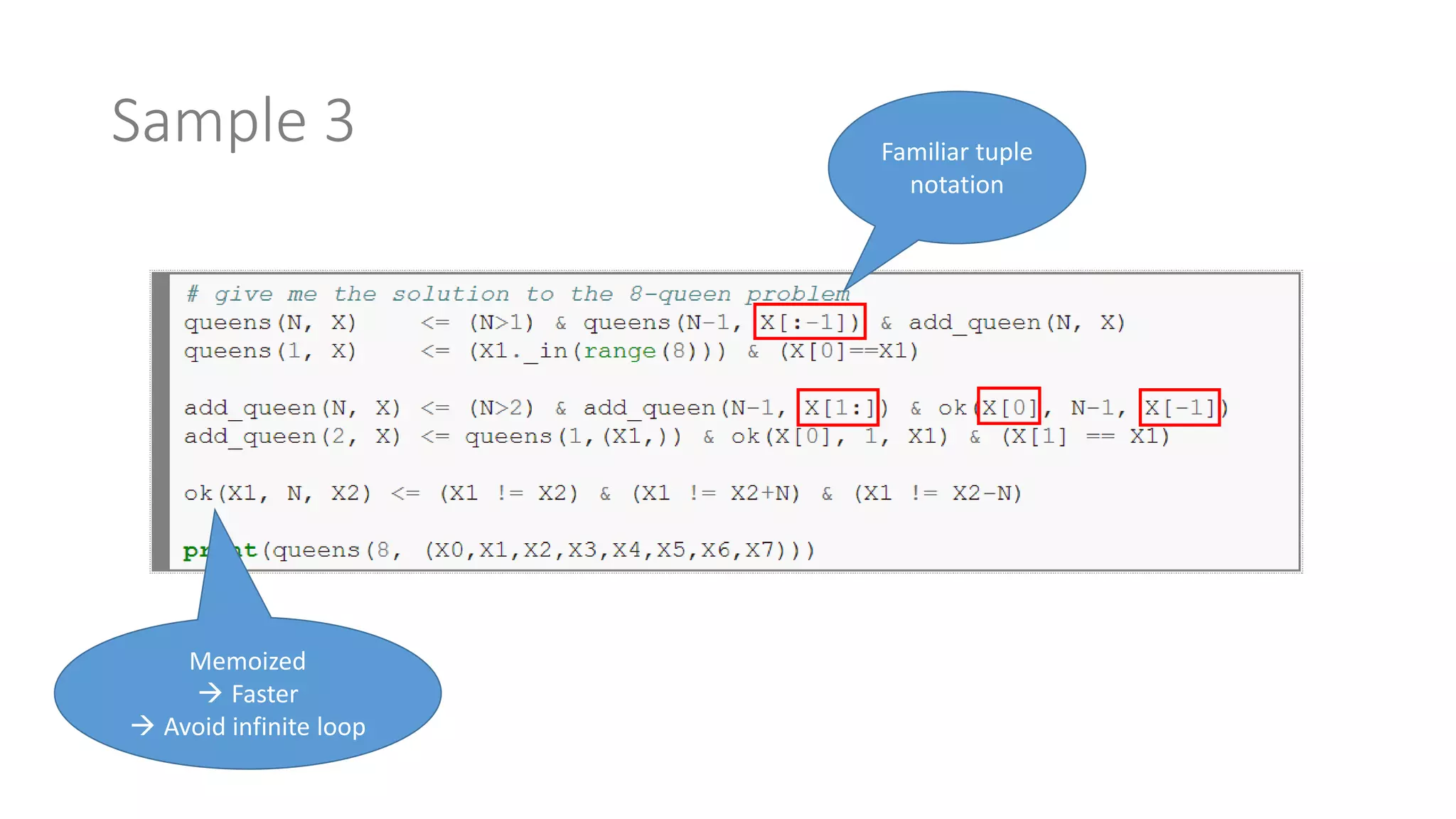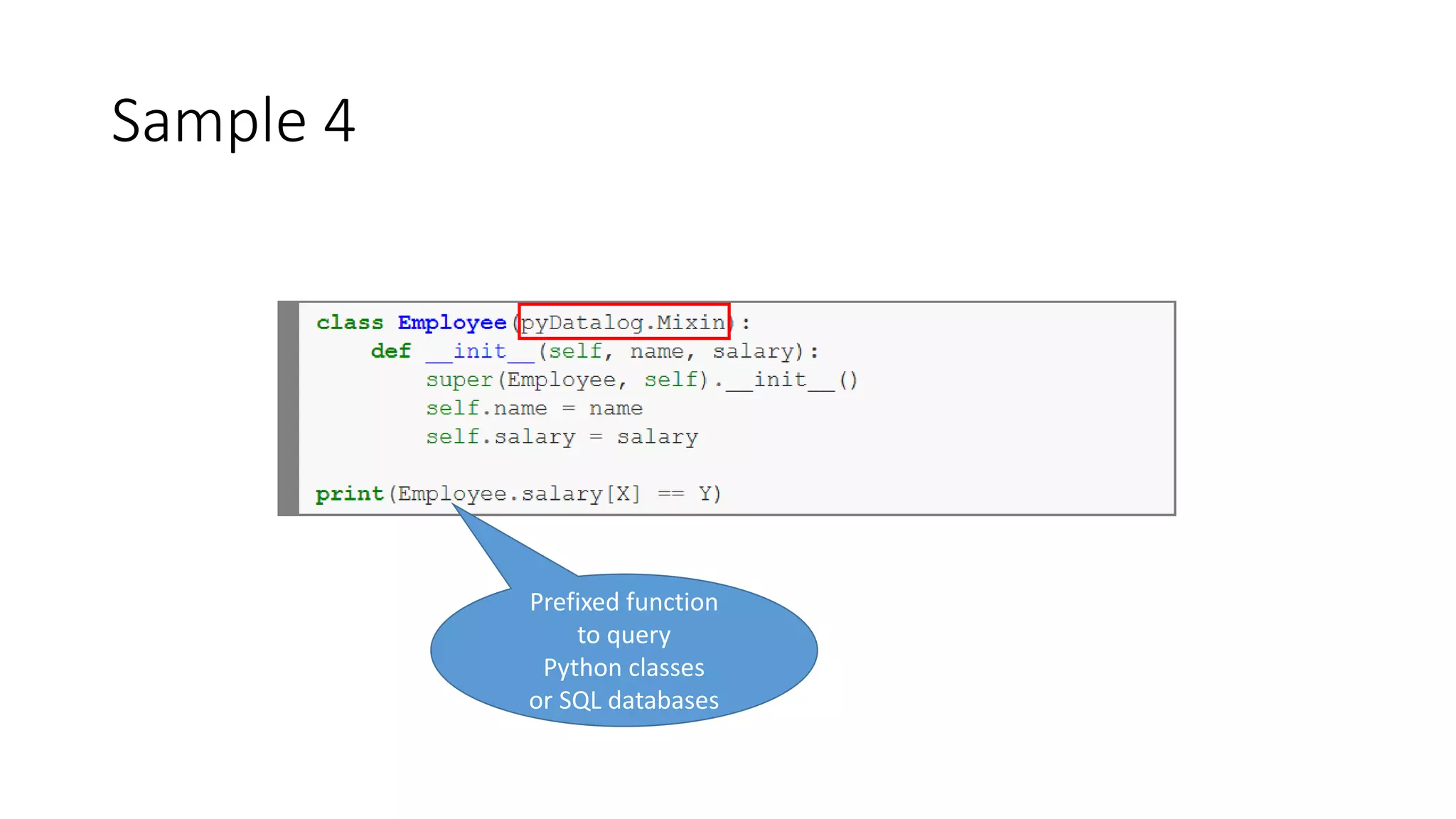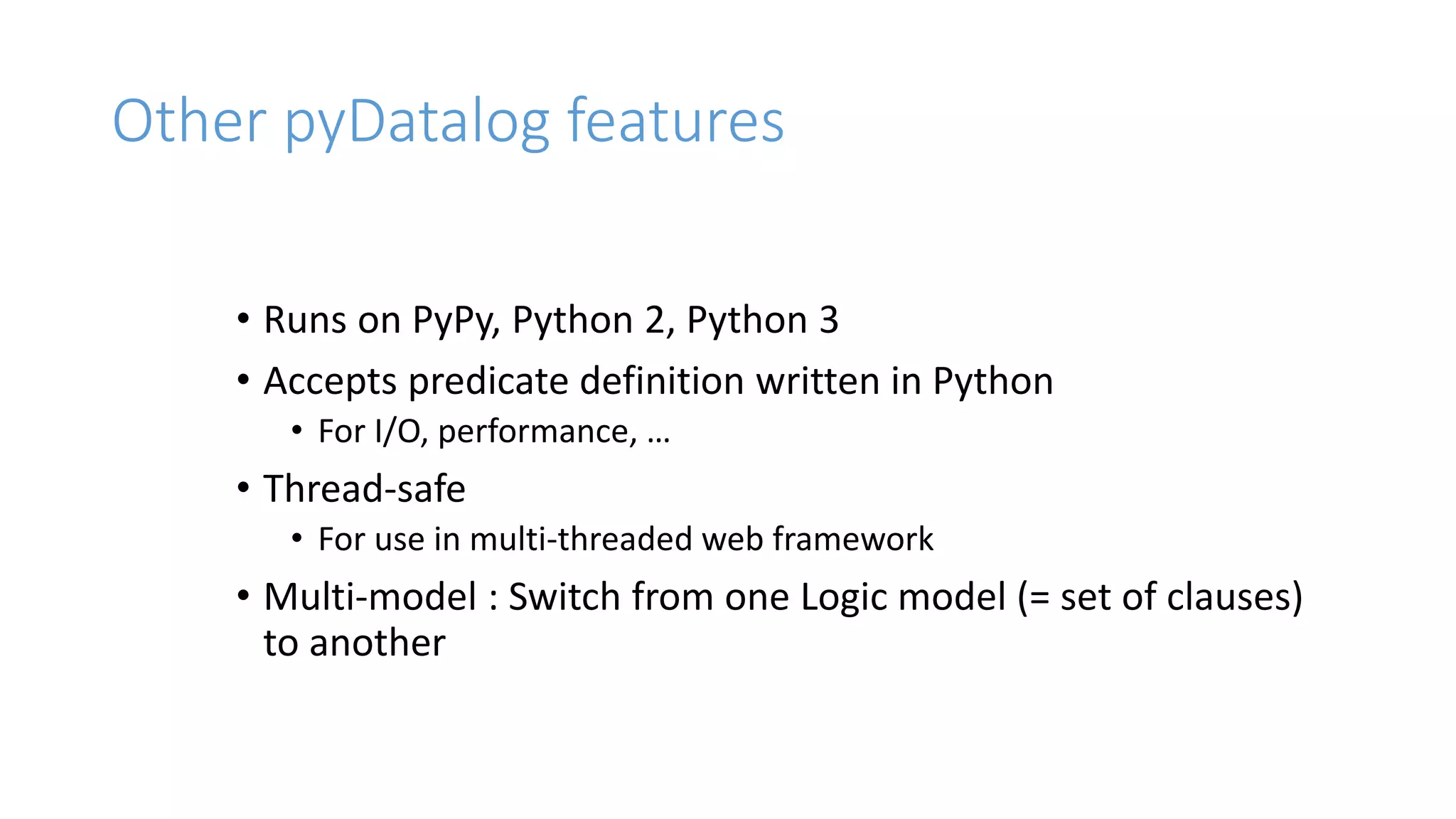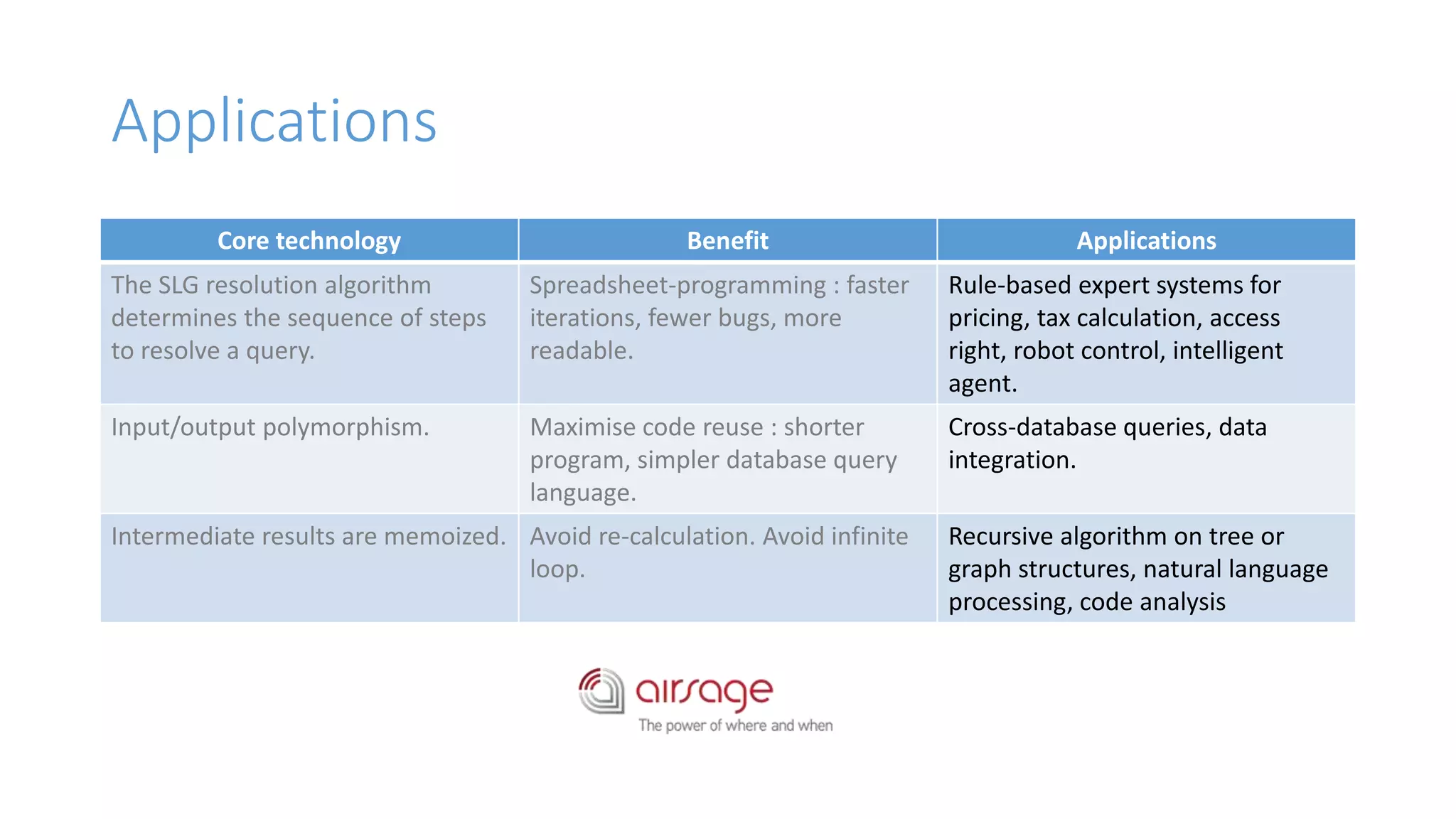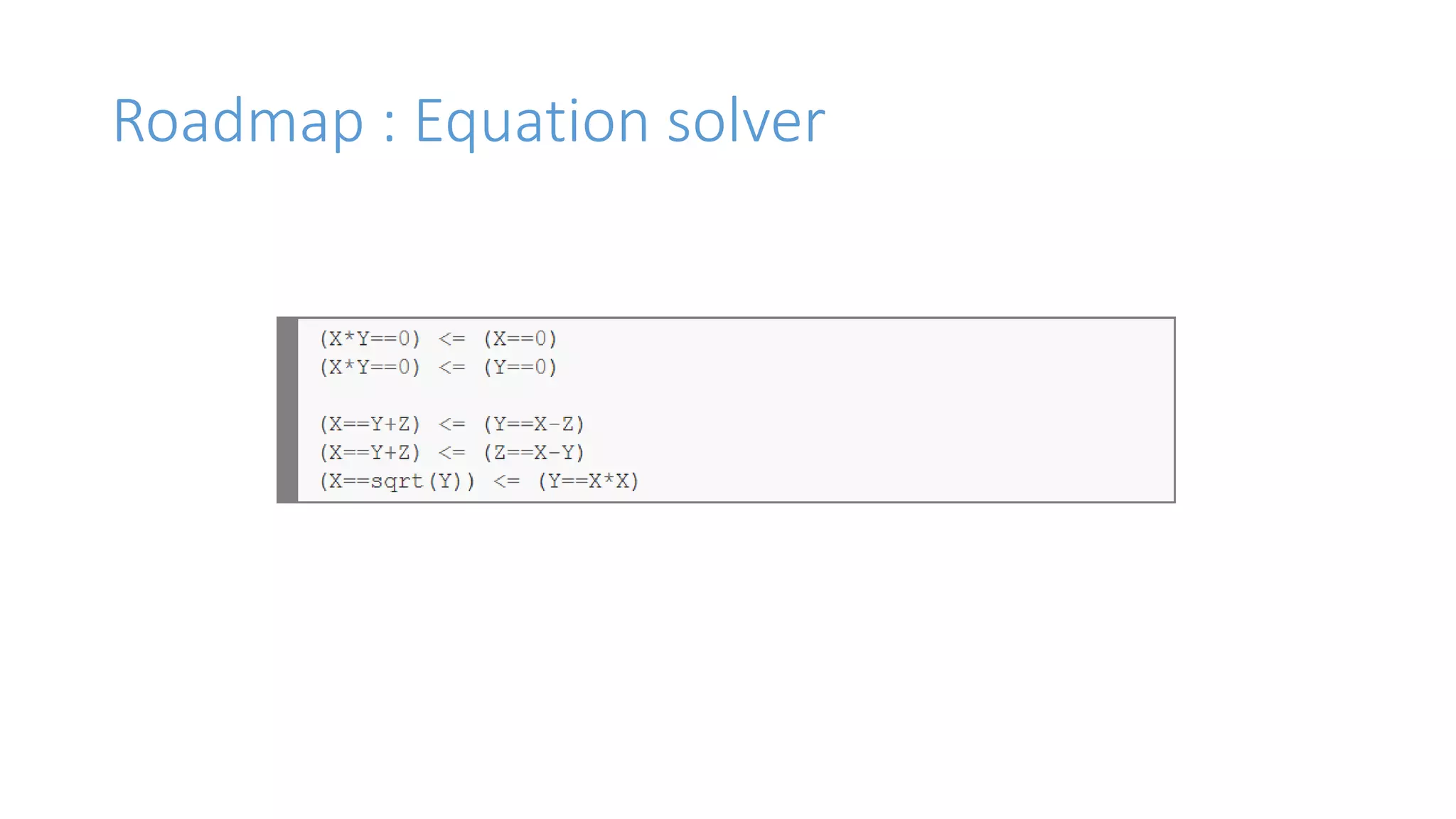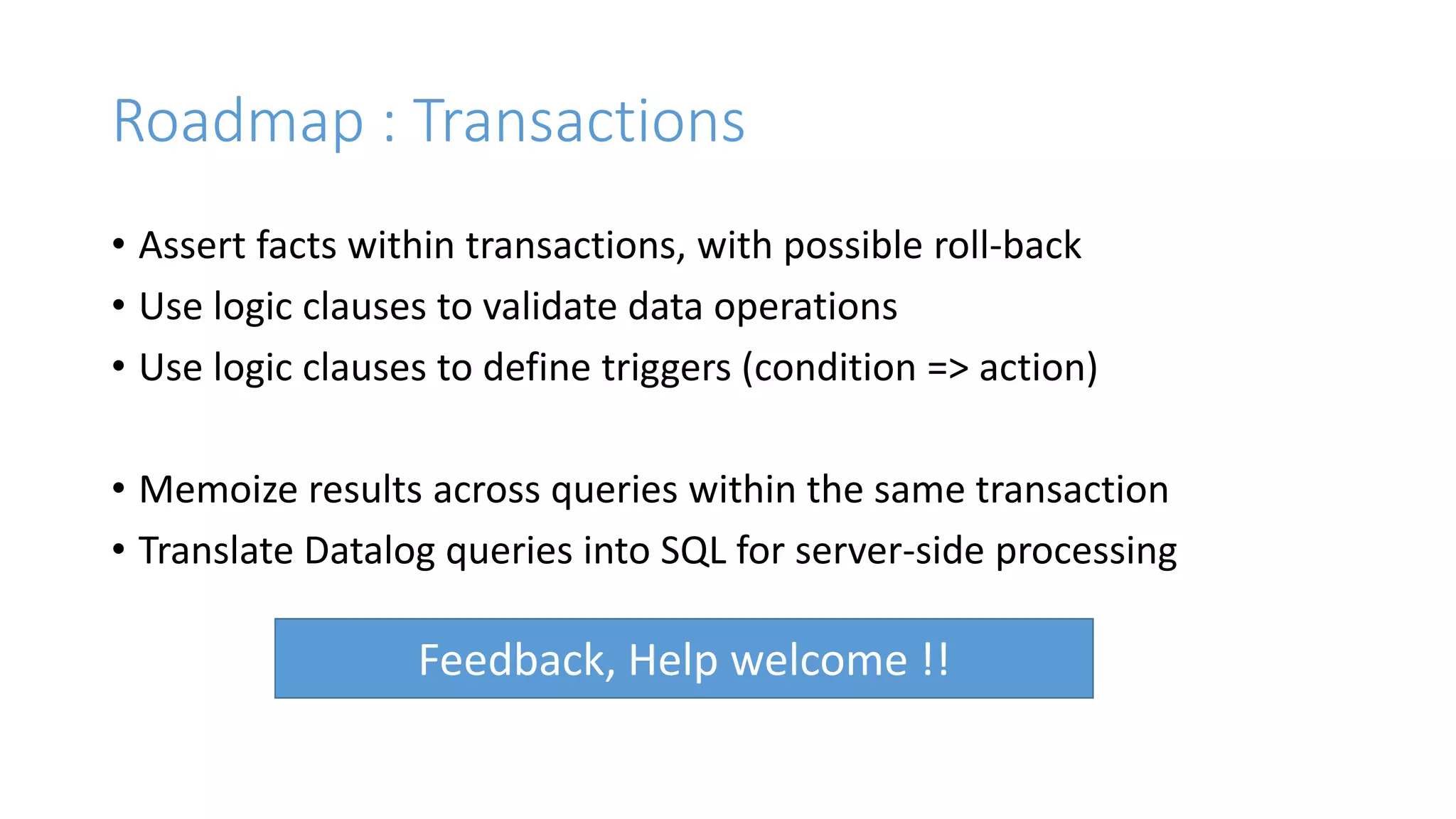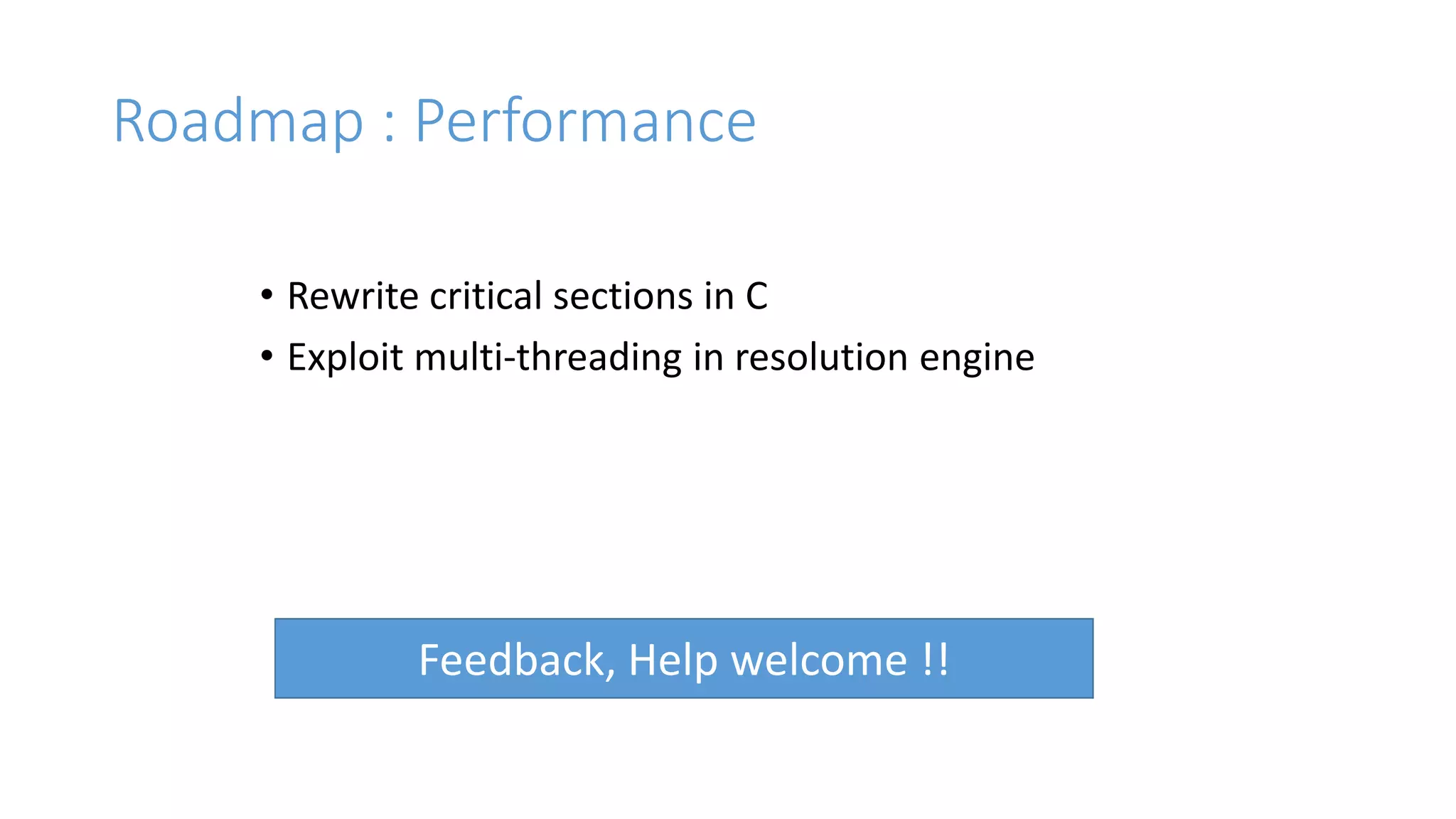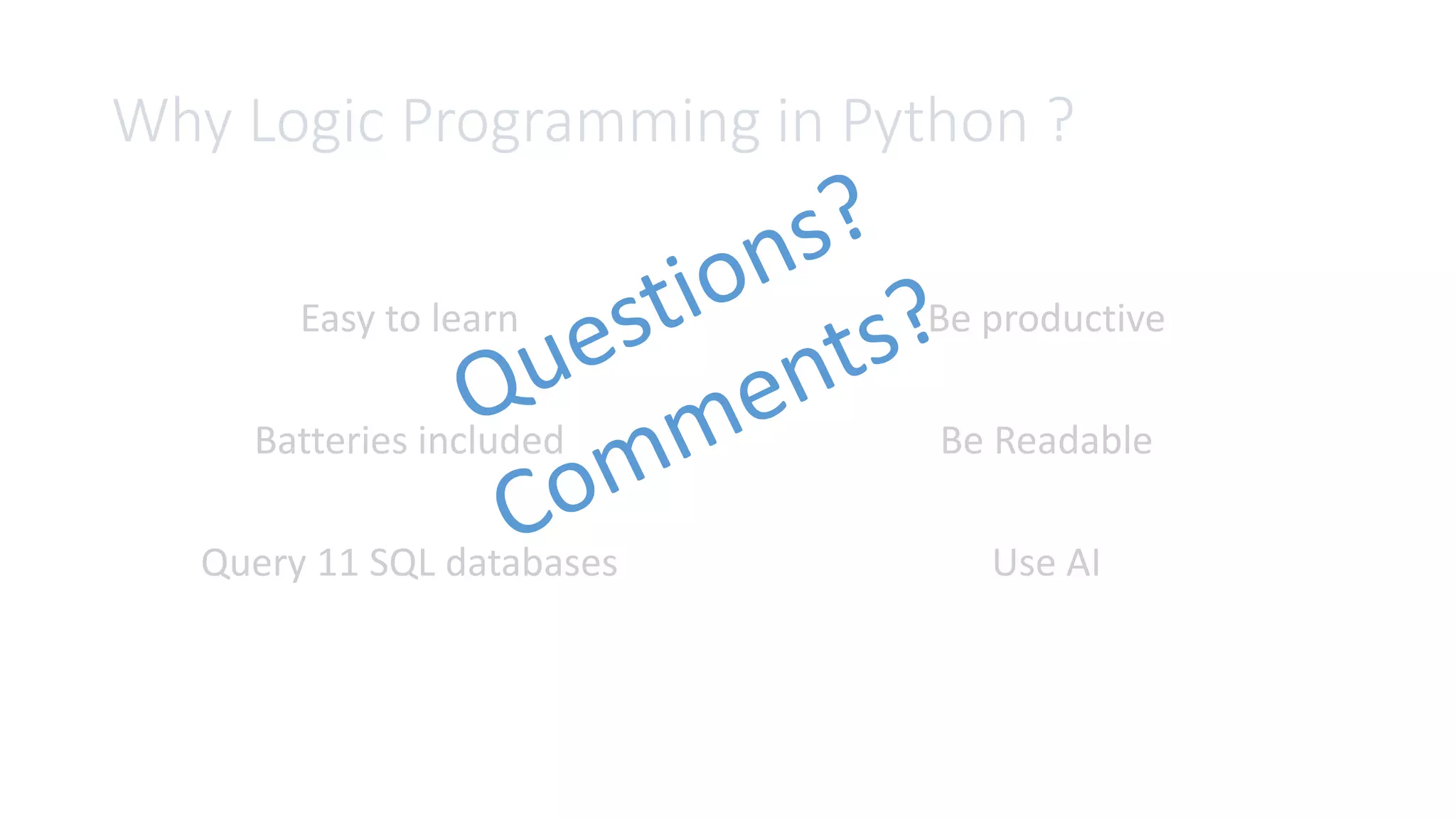Logic programming in Python allows for productive, readable programs using logic rules rather than loops or conditionals. The pyDatalog library adds logic programming capabilities to Python. Programs are defined with facts and clauses like Prolog, and can query SQL databases. PyDatalog memoizes results to avoid recomputation and supports features like aggregate functions. It allows applications like spreadsheet programming, expert systems, and cross-database queries. The presenter outlines roadmaps for adding an equation solver, transactions, and improving performance.


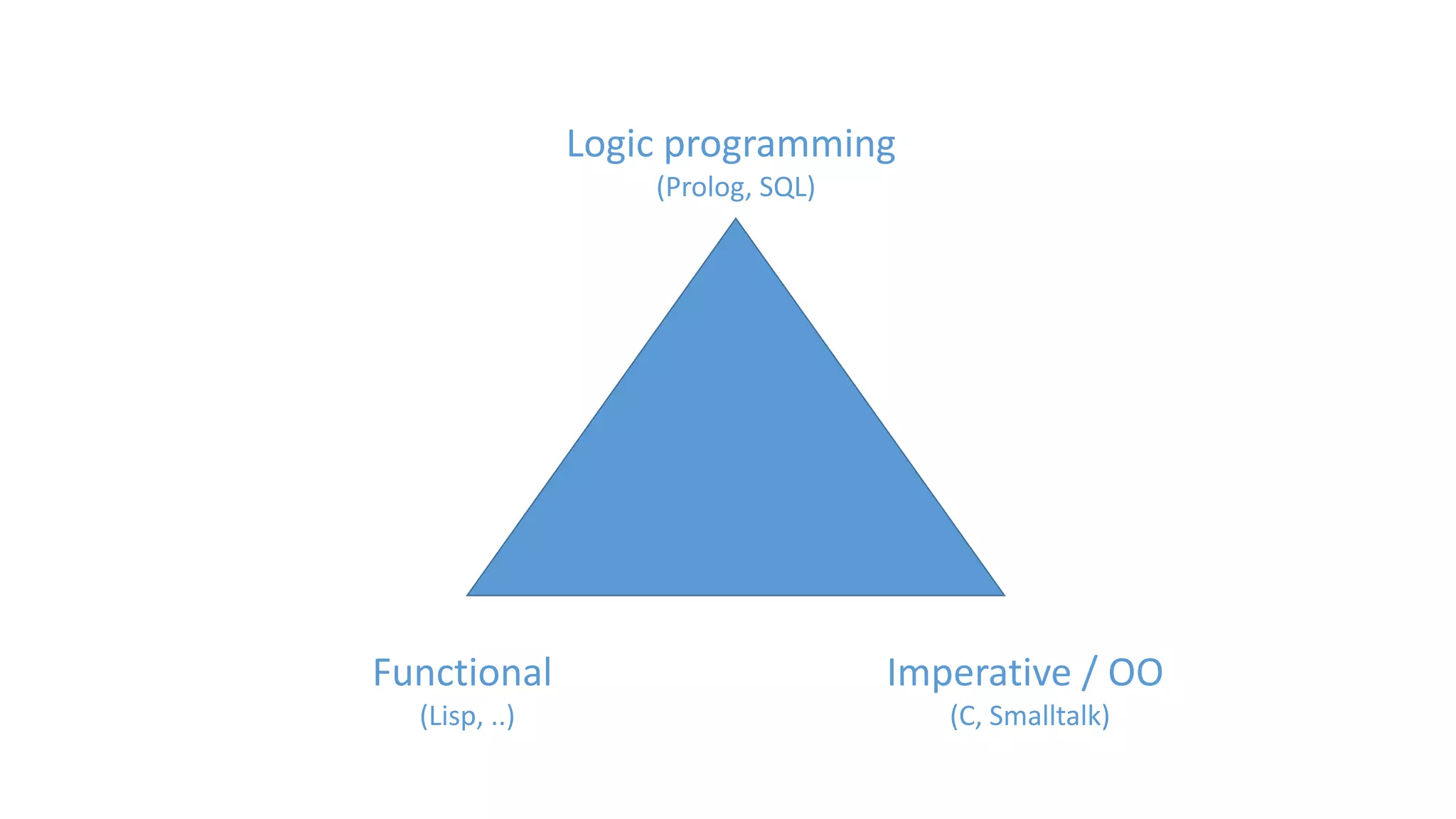
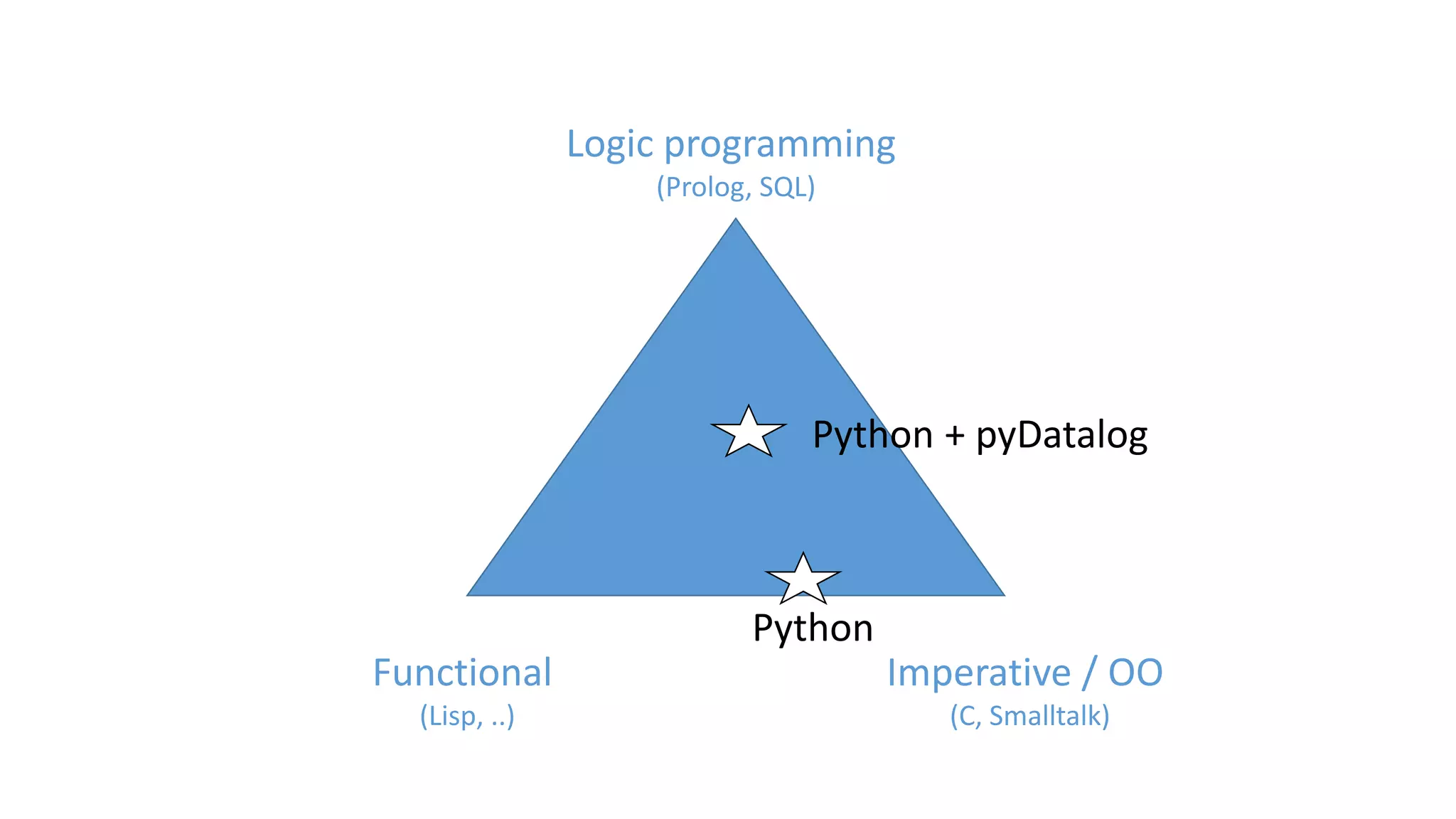
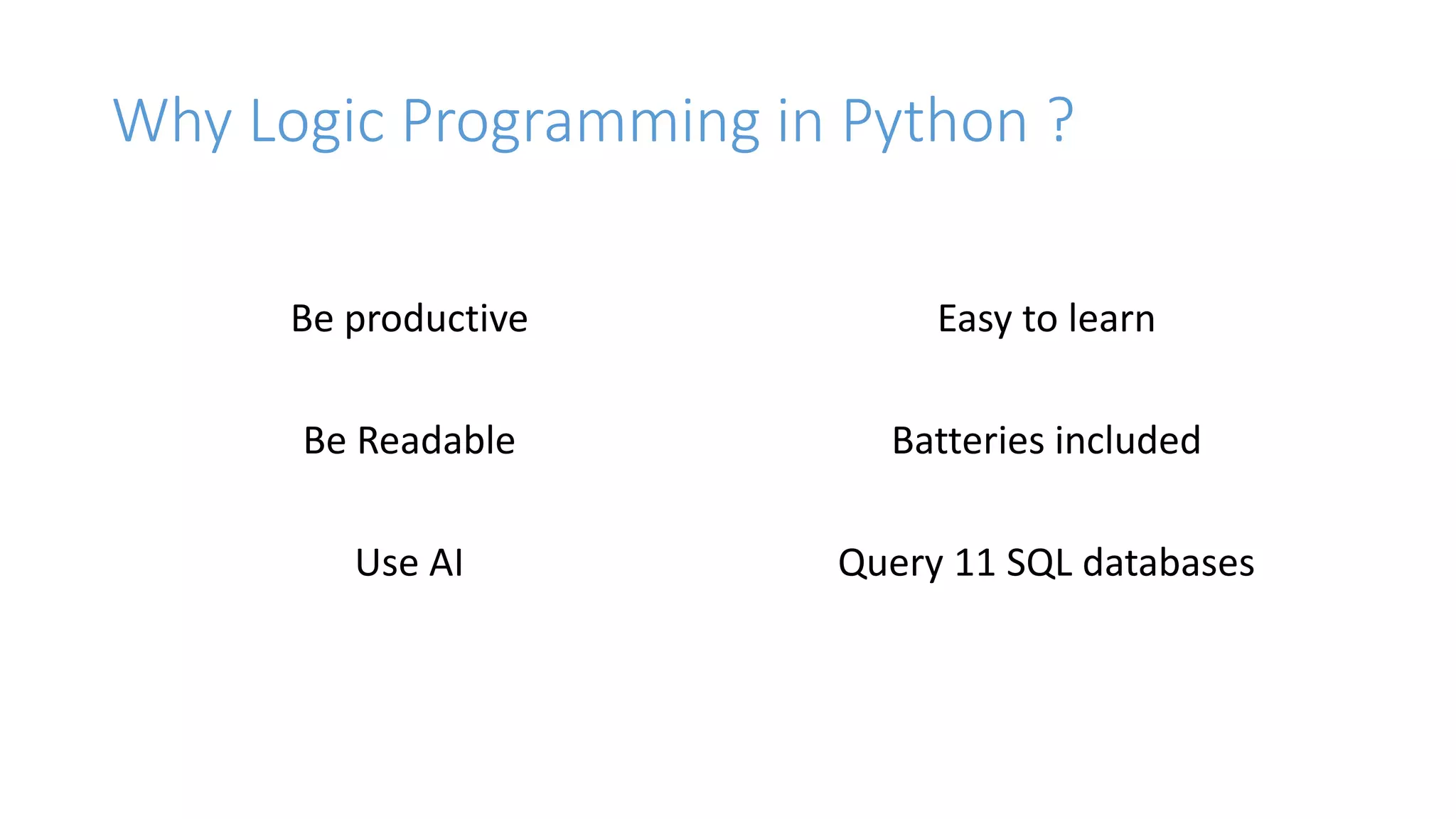
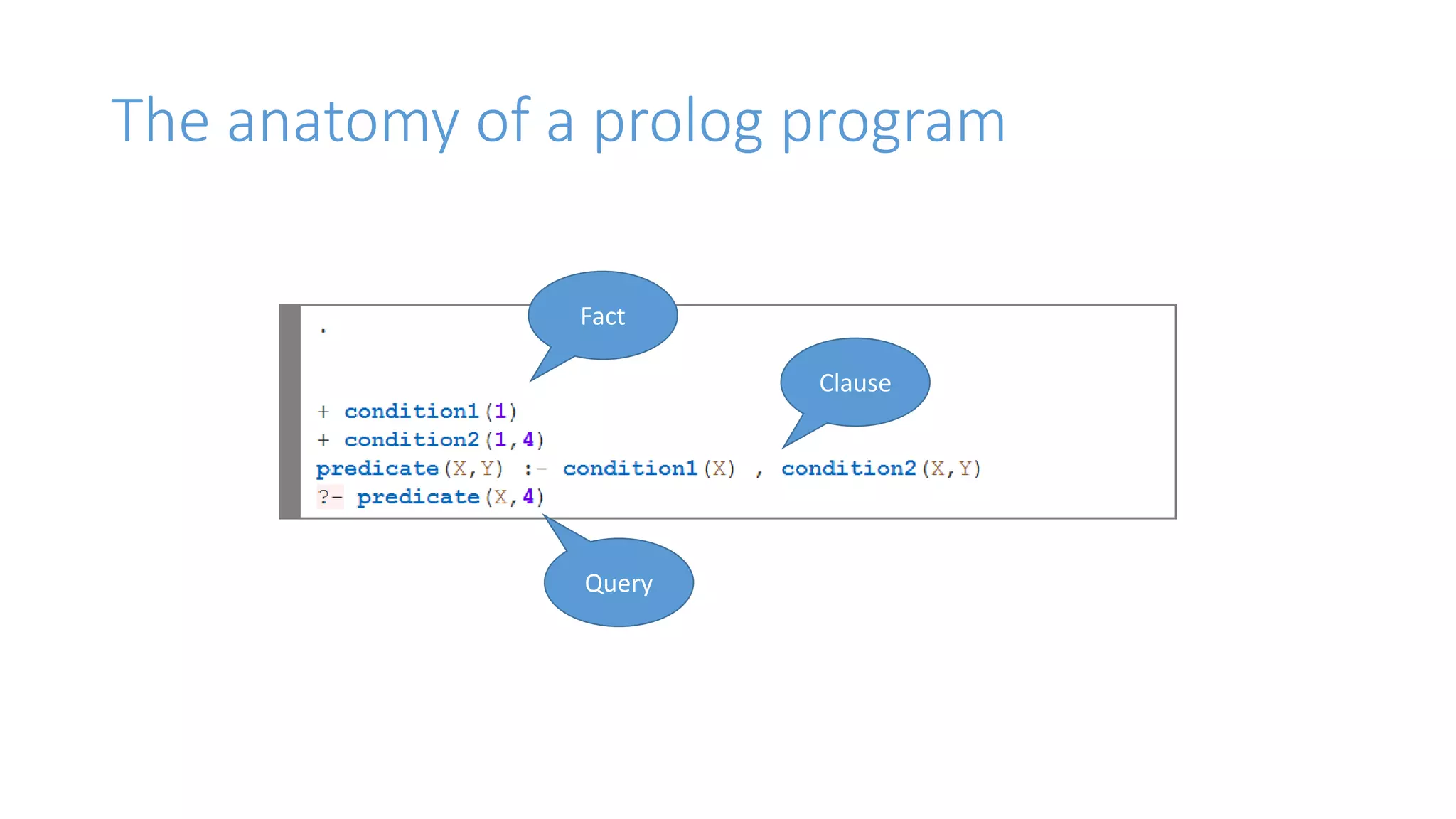
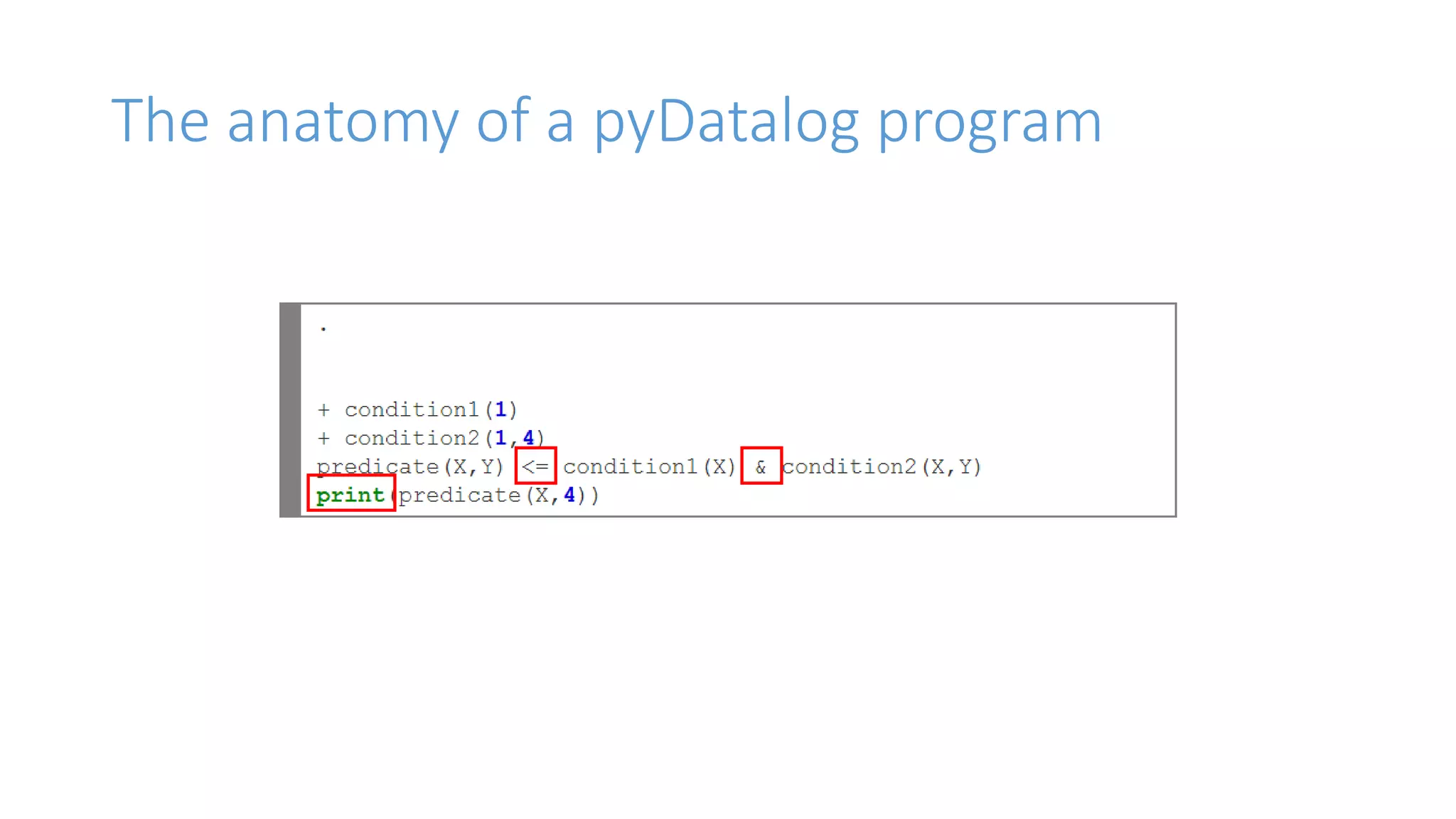
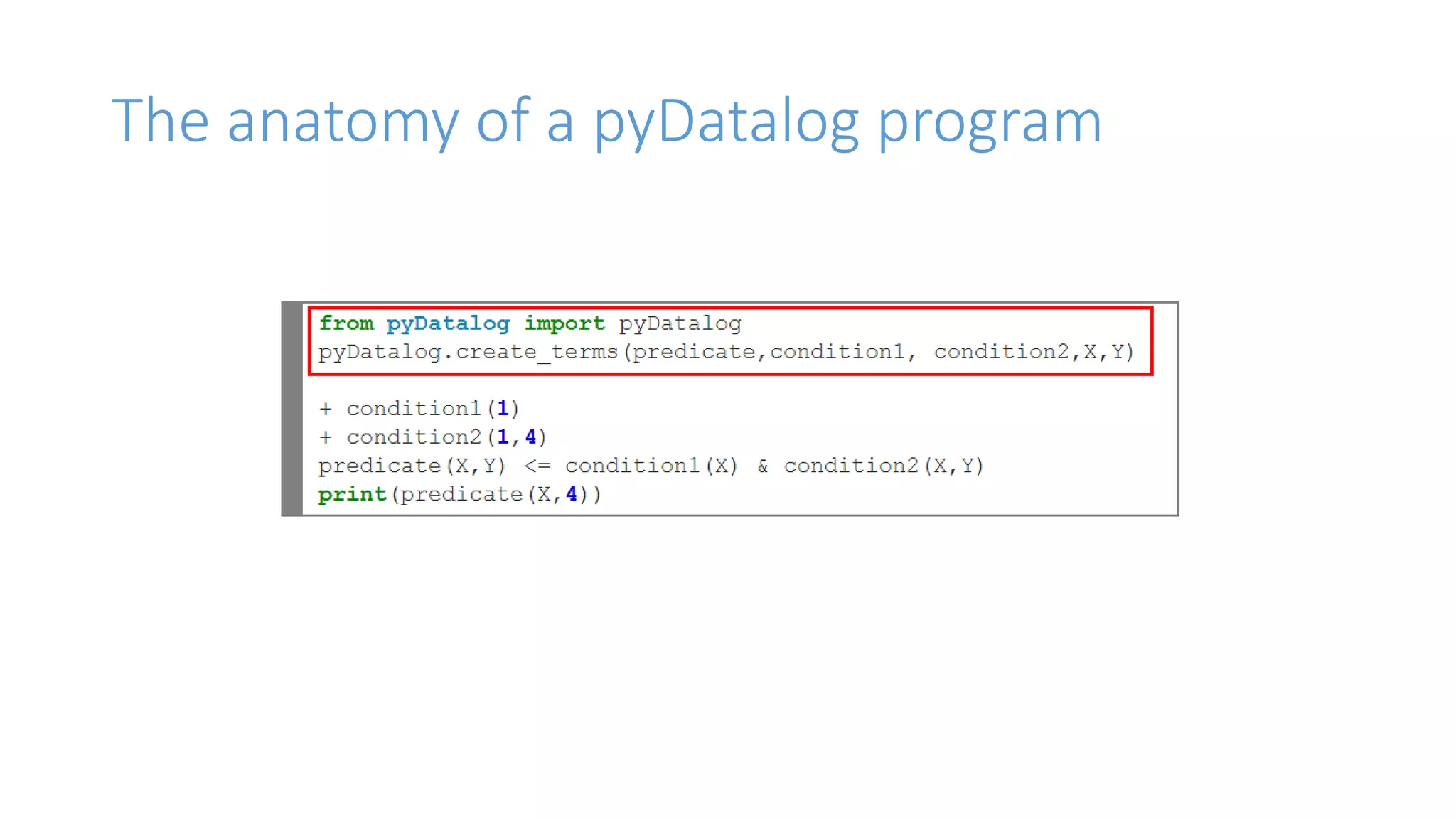
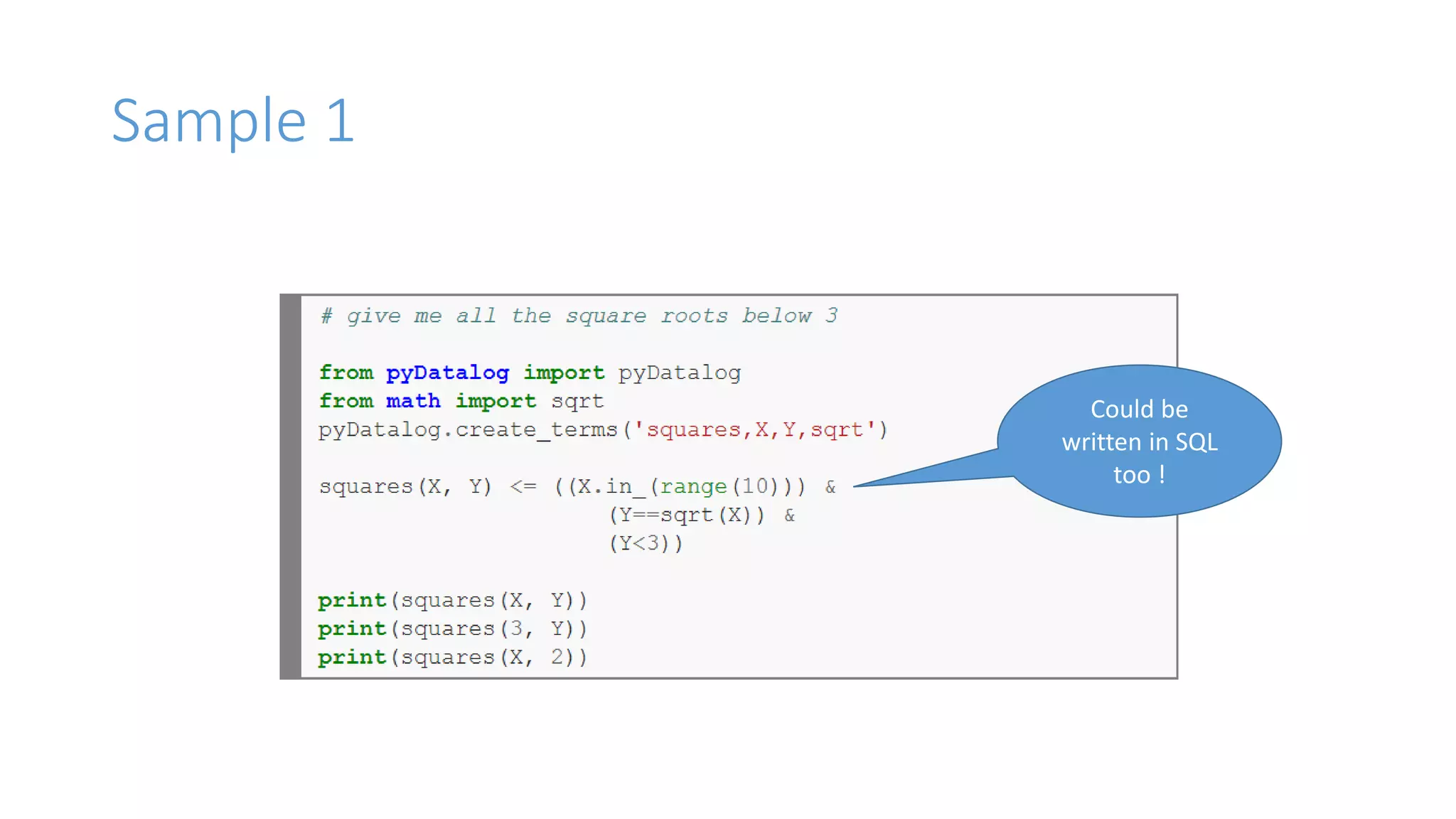
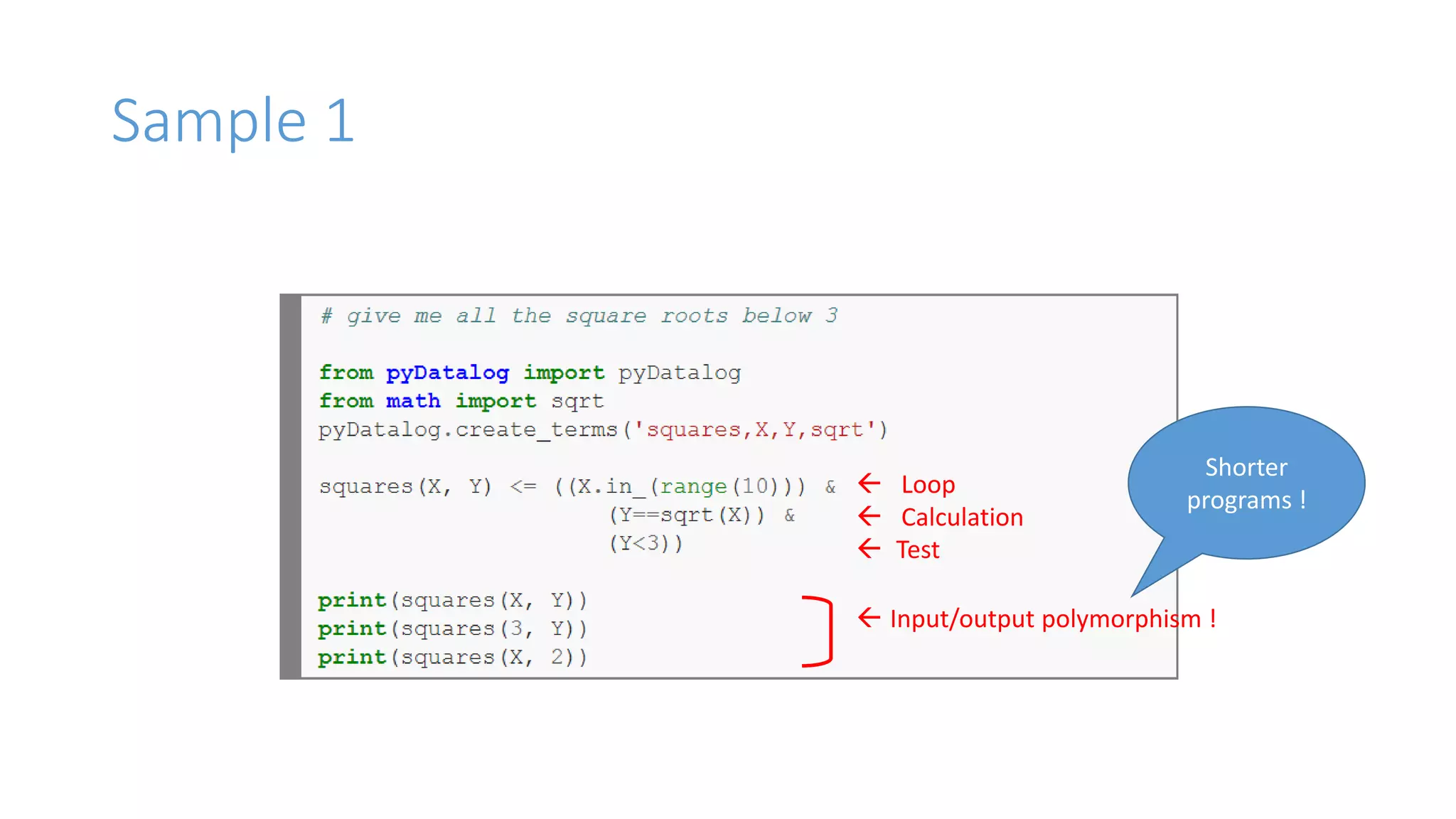
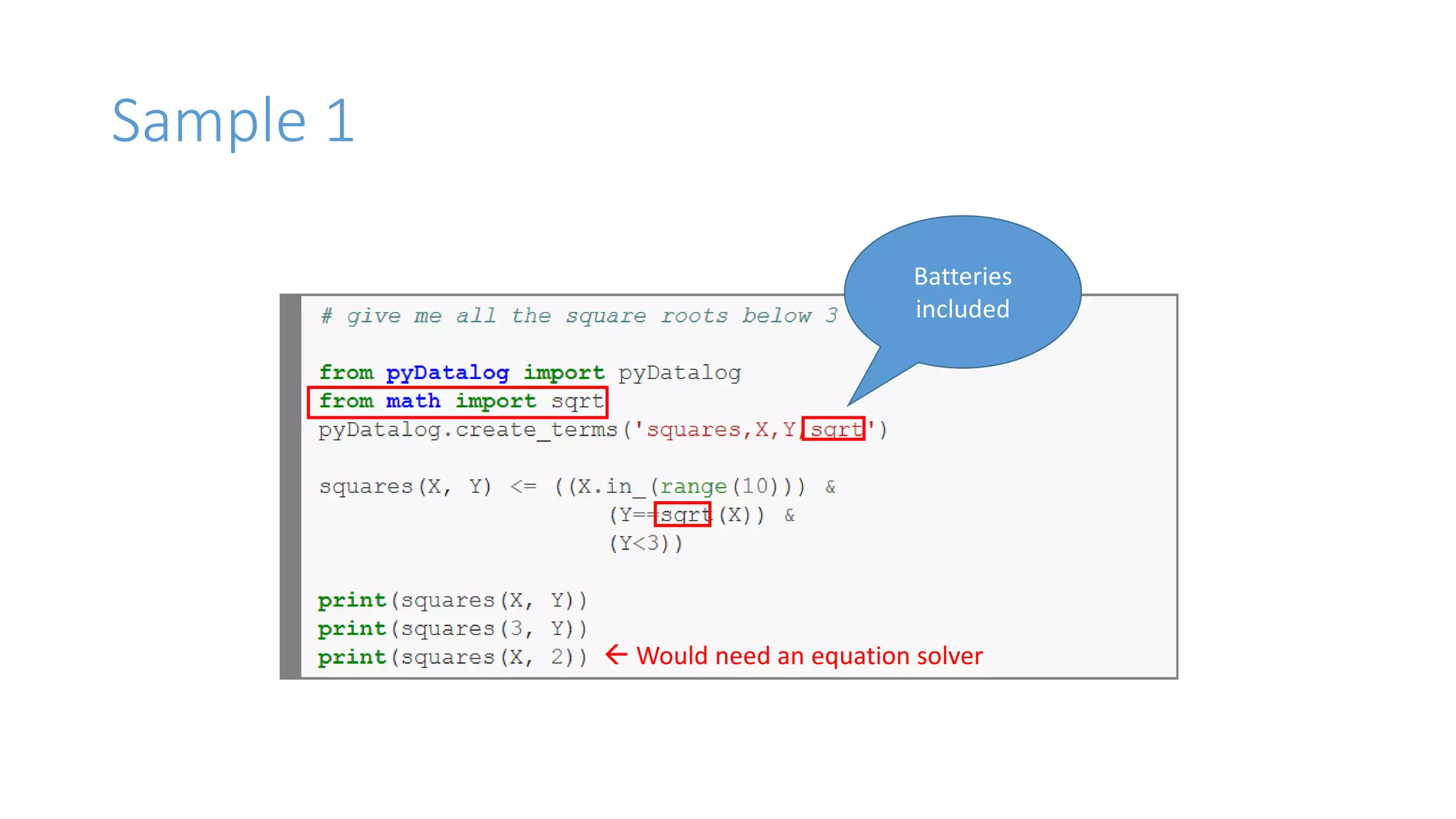
![Sample 2 • f[X]=2*X is equivalent to (f[X]==Y) <= (Y==2*x) • Functions return only 1 value per key (aka dict()) • Functions can appear in expressions • Resolution starts with the latest clause, and stops on first answer • Support for aggregate functions : sum, min, max, …](https://image.slidesharecdn.com/logicprogramminginpython-140627095657-phpapp02/75/Logic-programming-in-python-12-2048.jpg)
